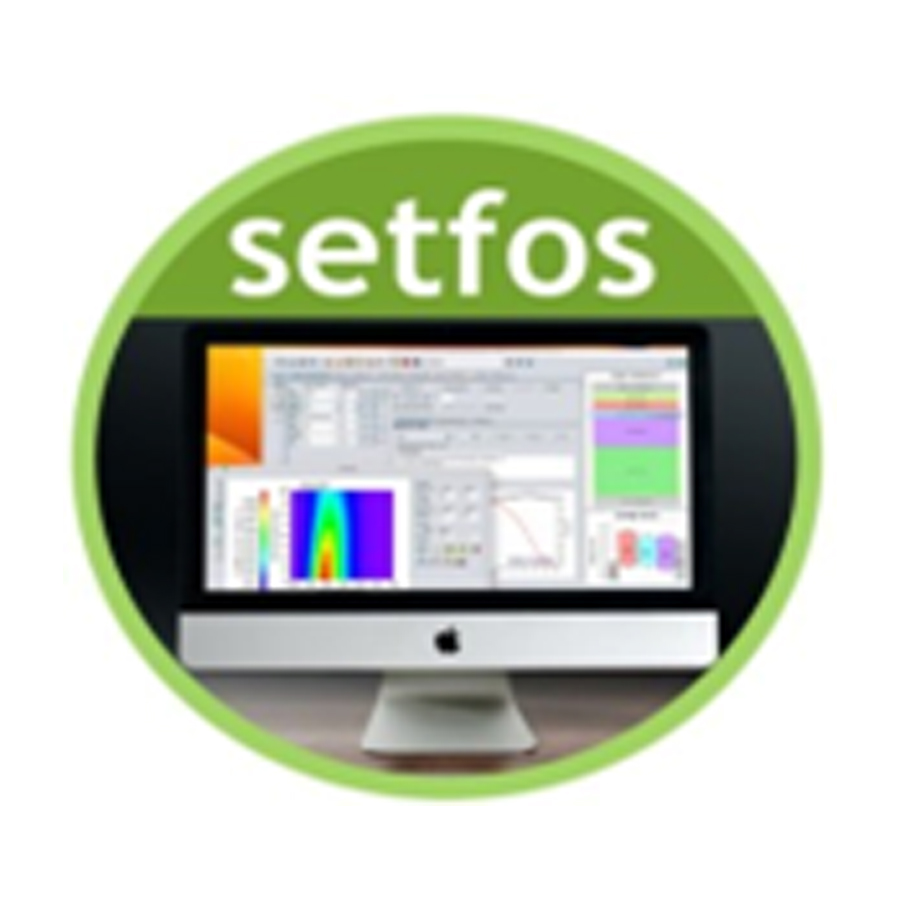
SETFOS Software (Semiconductor optoelectronics device simulation tool)
SETFOS is a Swiss made Software developed by FLUXiM AG for modelling & Simulation of Light Emitting Diodes (QD-LED, O-LED, Perovskite-LED) & Photovoltaic devices (Perovskites, Tandem, Thin Film, Organic) to calculate electrical, optical & emissive properties of semiconductor device.

| S.N | SETFOS SOFTWARE | SCAPS1D SOFTWARE |
|---|---|---|
| 1 | There is NO LIMITATION of Number of LAYERS Modelling in SETFOS S/W. | SCAPS1D supports only UPTO 7 Layer. |
| 2 | SETFOS Support TRANSIENT Simulation. | It does not SUPPORT TRANSIENT features. |
| 3 | All OPTICAL PROPERTIES can be calculated. | Not possible to calculate optical properties. |
| 4 | Impact ionization model supported | Impact ionization not supported in SCAPS1D |
| 5 | Supports Mobile IONS (Anion & Cation) model. | Does not support IONS (ANION& CATION) |
| 6 | Support roughness /scattering parameters. | Does not support roughness/scattering |
| 7 | It supports Solar Cell with OLED devices. | It supports only Solar Cell (NOT OLED) |
| 8 | Algorithms is optimized ,Simulation VERY FAST | SCAPS1D is Less Fast compare to SETFOS. |
| 9 | It supports WINDOWS, LINUX, MAC OS. | It supports only Windows OS. |
| 10 | Material & Example libraries are huge. | Materials libraries & examples is limited. |
| 11 | photodetector simulation to calculate responsivity is possible | Photodetector is not possible to simulate |
| 12 | UPDATE REGULARLY | It does not update regularly. |
| 13 | Realistic Sky spectrum for given geographic location & time. | SCAPS1D does not support location & time dependent (geographic) spectrum model |
| 14 | Support parameters Sweeping & Optimization. | Does not support Sweeping & Optimization. |
| 15 | Support 3D Master-Equation model for Excitons | Not support 3D Master-Equation for Excitons |
| 16 | Support Impedance analysis & Hysteresis effect. | Impedance analysis & Hysteresis is not support |
| 17 | It supports Quantum Dot with Phosphorescent dye simulation with nano particle effect. | It does not support Quantum Dot with Phosphorescent dye with nano particle effect. |
| 18 | It supports effect medium approximation & analytical dispersion model. | It does not have effect medium approximation & analytical dispersion model. |
| 19 | SETFOS Support Hopping model for Interface. | SCAPS1D does not support hopping model. |
| 20 | It Support various mobility model like Constant, Field temperature dependent, Extended Correlated / Gaussian Disorder Model (ECDM/EGDM) | SCAPS1D support only constant mobility model. |
| 21 | SETFOS can perform Small Signal Analysis (Impedance Spectroscopy analysis) | SCAPS1D can not perform Small signal analysis. |
| 22 | Analytical dispersion models like Cauchy, Lorentz / Sellmeier, Effective medium approximation like Linear, Bruggeman, Maxwell Garnett etc. | SCAPS1D does not support Analytical dispersion models & Effective medium approximation. |